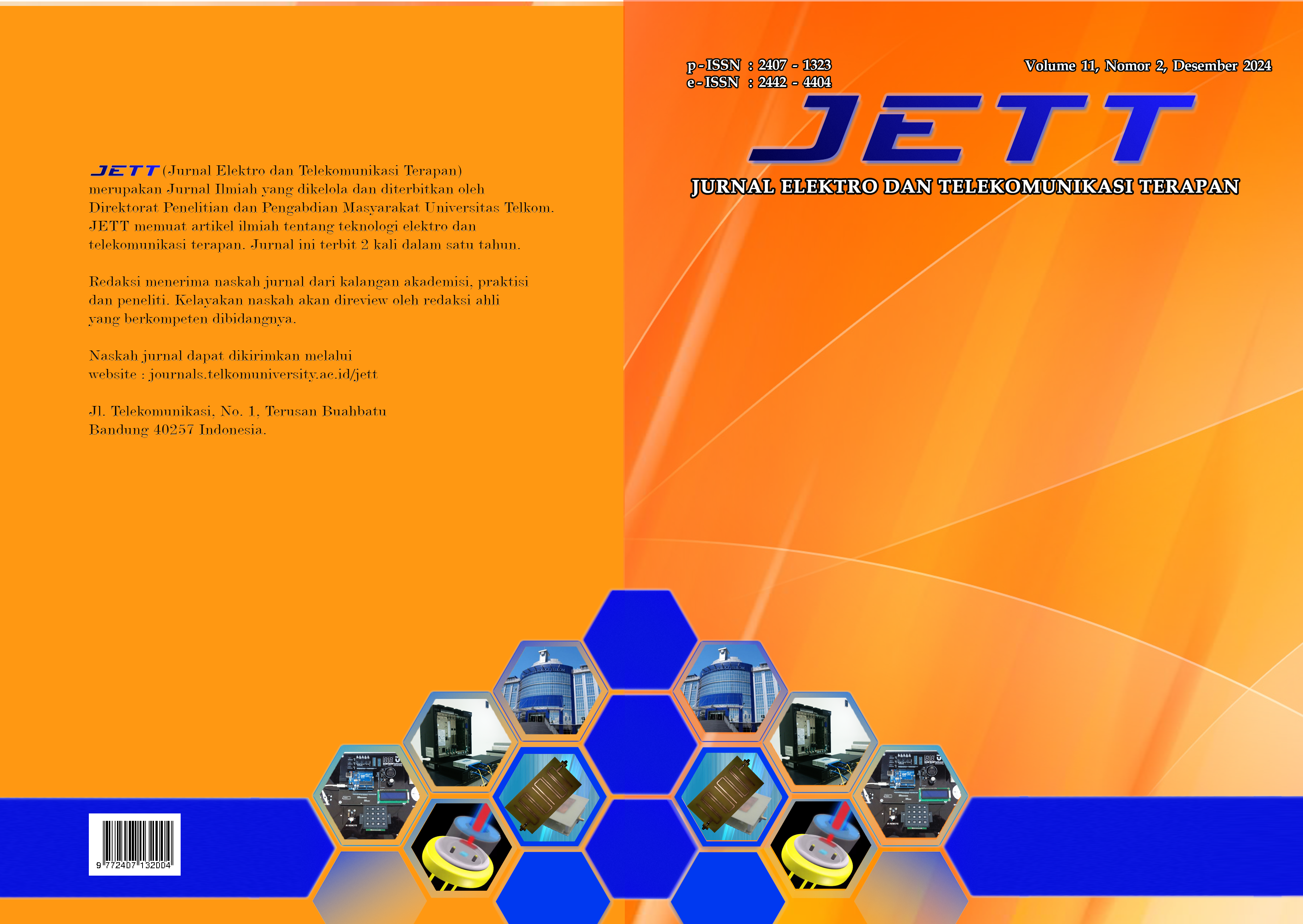| Issue | Vol. 10 No. 1 (2023) |
| Release | 25 July 2023 |
| Section | Articles |
Electricity plays a very important role in everyday life. Most human activities are related to the use of electrical energy, including in the Campus environment. Technological advances have resulted in an increase in the consumption of electrical energy and this has resulted in reduced reserves of fossil energy sources as a result of being used up and causing emissions that can affect the global climate. The energy transition from the use of fossil energy to new and renewable energy is one solution to overcome this. Solar Power Plant (PLTS) is an alternative energy solution that is environmentally friendly that can be developed on campus. This is also supported by Indonesia's geographical location which has a very high intensity of sunlight. In this study, an analysis of the potential of electrical energy generated at Universitas Muhammadiyah Parepare Building was carried out. The research was conducted by measuring the surface voltage and temperature of solar panels for 20 days. The test was carried out for 7 hours from 10.00 WITA to 16.00 WITA. Voltage and temperature measurements were carried out in 1 hour intervals. The test results show that the average voltage value generated by solar panels is 21.31 volts. The highest average voltage value was generated at 13.00 WITA, which was 21.82 volts with an average surface temperature of 37.79 oC
Keywords: electricity energy, PLTS, solar panel, voltage, temperature
Tanwir, S. Widiastuti dan A. M. Fabanyo, “Penyerapan Energi Matahari pada Solar Cell dengan Menggunakan Sistem Tracking,” JURNAL TEKNIK MESIN, vol. 8, no. 2, pp. 13-25, 2019.
M. A. Faizin, W. Arnandi dan A. N. Setyo, “Pengaruh Intensitas Cahaya Terhadap Unjuk Kerja Solar Cell Tipe Polycrystalline Silicon Kapasitas 10 Watt,” RIDTEM: Riset Diploma Teknik Mesin, vol. 1, no. 2, pp. 27-35, 2018.
Suwarti, Wahyono dan B. Prasetiyo, “Analisis Pengaruh Intensitas Matahari, Suhu, Permukaan & Sudut Pengarah Terhadap Kinerja Panel Surya,” EKSERGI: Jurnal Teknik Energi, vol. 14, no. 3, pp. 78-85, 2018.
A. M. Ridho, B. Winardi dan A. Nugroho, “Analisis Potensi Ddn Unjuk Kerja Perencanaan Pembangkit Listrik Tenaga Surya (PLTS) di Departemen Teknik Elektro Universitas Diponegoro Menggunakan Software Pvsyst 6.43,” TRANSIENT, vol. 7, no. 4, pp. 884-890, 2018.
A. Makkulau, Samsurizal dan S. Kevin, “Karakteristik Temperatur Pada Permukaan Sel Surya Polycrystalline Terhadap Efektifitas Daya Keluaran Pembangkit Listrik Tenaga Surya,” Jurnal Ilmiah Sutet, vol. 10, no. 2, pp. 69-78, 2020.
R. Hasrul, “Analisis Efisiensi Panel Surya Sebagai Energi Alternatif,” SainETIn: Jurnal Sain, Energi, Teknologi & Industri, vol. 5, no. 2, p. 79–87, 2021.
F. Ardianto, Y. Ramaleno, B. Alfaresi dan Z. Saleh, “Intensitas Cahaya Matahari Pada Panel Surya Terhadap Daya yang Dihasilkan,” dalam Seminar Nasional AVoER XIII 2021, Fakultas Teknik Universitas Sriwijaya, 2021.
T. N. Hidayat, R. Subodro dan Sutrisno, “Analisis Output Daya Pada Pembangkit Listrik Tenaga Surya Dengan Kapasitas 10WP, 20WP, dan 30WP,” Jurnal CRANKSHAFT, vol. 4, no. 2, pp. 9-18, 2021.
R. B. Utomo, I. Isdhianto, H. Kusnanto, M. Iwan, E. Sarwono dan H. K. Hassan, “Analisa Pengaruh Intensitas Cahaya terhadap Kinerja Modul Photovoltaic Cell,” Jurnal Creative Research in Engineering, vol. 2, no. 2, pp. 72-80, 2022.
H. Johan, N. Utomo dan R. W. Wardana, “Pengaruh Temperatur Udara, Kelembaban Udara, Kecepatan Udara dan Intensitas Cahaya Terhadap Daya Listrik Panel Surya,” Edufisika: Jurnal Pendidikan Fisika, vol. 7, no. 1, pp. 55-61, 2022.
S. W. Putri, G. Marausna dan E. E. Prasetiyo, “Analisis Pengaruh Intensitas Cahaya Matahari Terhadap Daya Keluaran Pada Panel Surya,” Teknika STTKD : Jurnal Teknik, Elektronik, Engine, vol. 8, no. 1, pp. 29-37, 2022.
Ezwarsyah, Asri dan A. Bintoro, “Analisa Pengaruh Perubahan Suhu Terhadap Tegangan Panel Surya Jenis Mono Chrystalline Kapasitas Daya 50 WP,” Jurnal Energi Elektrik, vol. 11, no. 1, pp. 22-25, 2022.
Copyright Notice
An author who publishes in the Jurnal Elektro dan Telekomunikasi Terapan agrees to the following terms:
- Author retains the copyright and grants the journal the right of first publication of the work simultaneously licensed under the Creative Commons Attribution-NonCommercial 4.0 International License that allows others to share the work with an acknowledgement of the work's authorship and initial publication in this journal
- Author is able to enter into separate, additional contractual arrangements for the non-exclusive distribution of the journal's published version of the work (e.g., post it to an institutional repository or publish it in a book) with the acknowledgement of its initial publication in this journal.
- Author is permitted and encouraged to post his/her work online (e.g., in institutional repositories or on their website) prior to and during the submission process, as it can lead to productive exchanges, as well as earlier and greater citation of the published work (See The Effect of Open Access).
Read more about the Creative Commons Attribution-NonCommercial 4.0 International License. here: http://creativecommons.org/licenses/by-nc/4.0/.
Privacy Statement
The names and email addresses entered in this journal site will be used exclusively for the stated purposes of this journal and will not be made available for any other purpose or to any other party.


